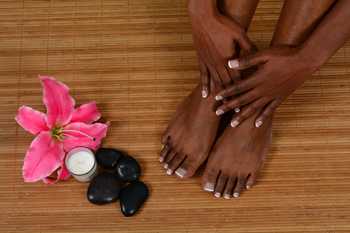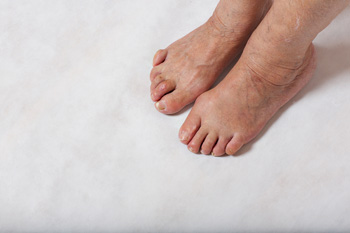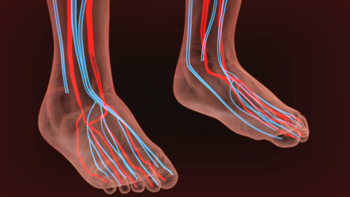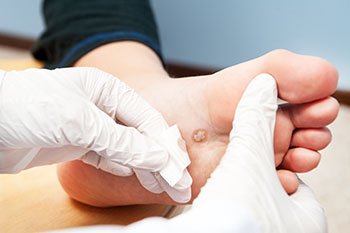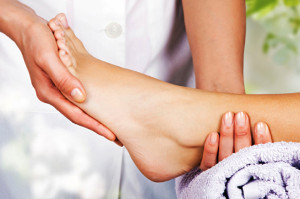
Reflexology is a popular form of foot therapy. This type of therapy focuses on pressing on specific reflex points on the foot, and many people find it to be relaxing. It is known to balance energy in the body, and patients may find this helps to maintain well-being. Organs and certain areas of the body are connected to these points and can invoke a healing response. Some of the benefits that are associated with reflexology can include boosting the immune system, increasing circulation, and cleansing the body of toxins. Additionally, some people have noticed existing headaches, sinus conditions, and stomach pains may be reduced when reflexology is practiced. Healing may occur to organs that need it, and the overall body may become stronger when the entire foot is massaged. If you are interested in learning more about foot reflexology, it is suggested that you confer with a podiatrist who can answer any questions you may have.
Foot therapy is often necessary for those recovering from either foot deformities or foot injuries. If you have concerns regarding therapy, consult with one of our podiatrists from Westside Podiatry Center, LLP. Our doctors can provide the care you need to keep you pain-free and on your feet.
Most Common Injuries
People who are active or athletes are prone to a variety of injuries. Therefore, it is often important to take part in physical therapy in order to quickly get back on the right track.
What to Do When Injured
Physical Therapy – This specialized treatment will focus on the affected area, speeding up recovery and the overall healing process. It is a proven method that has helped millions of people return from any injury.
During physical therapy you will undergo regimented training to get back into full form. Training is often very difficult, especially at first when the foot feels weak. Physical therapy often involves:
Basic stretching and twisting exercises – getting the feet’s mobility and flexibility up.
Massaging – the therapist will massage the injured area in order to activate the muscles and relax them.
Strengthening Exercises – this allows the muscles in the affected area to regain their full strength, a vital step towards full recovery.
If you have any questions please feel free to contact one of our offices located in Liverpool, Camillus, Skaneateles, Oswego, and Cicero, NY . We offer the newest diagnostic tools and technology to treat your foot and ankle needs.

